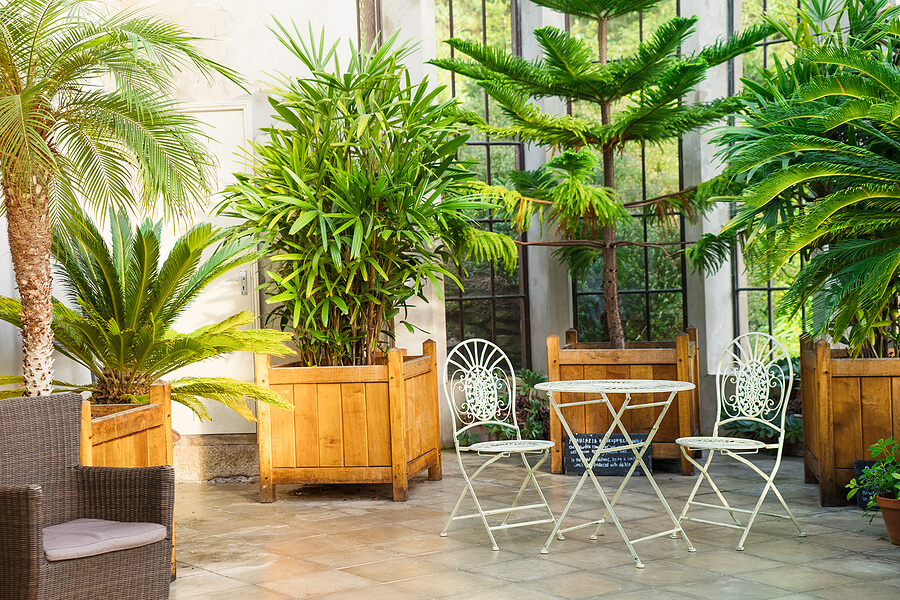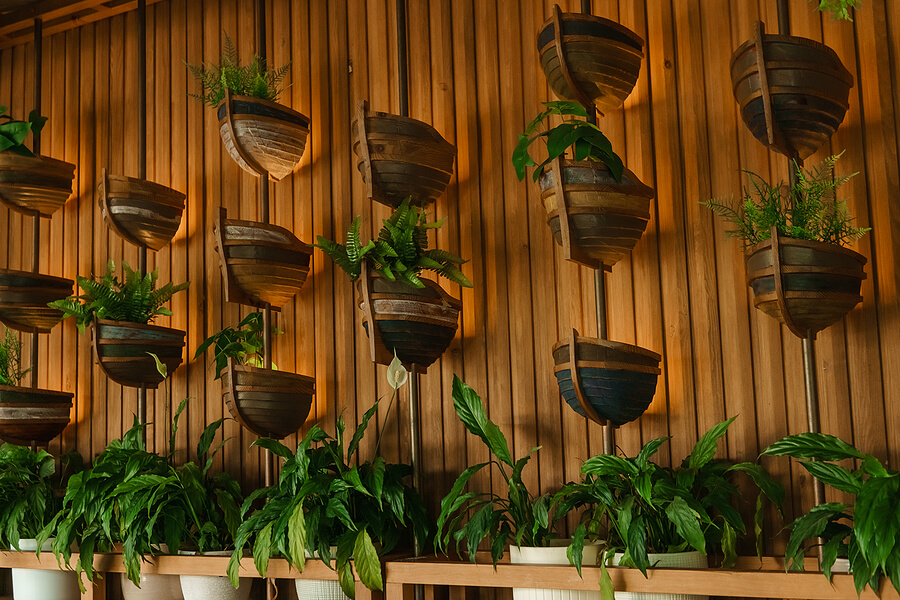As attention turns to employee wellbeing and how office environments influence physical and mental health, many businesses are adopting biophilic design principles for a more productive and positive workplace.
Biophilic office design utilises natural environmental elements to create a workplace that appeals to our innate desire to be outdoors.
Learn more about this growing design trend and discover how offices around the UK are improving their working environment with small yet impactful changes.
What is biophilic design?
In the building and architectural industry, biophilic design is a concept that helps connect occupants to nature.
It’s an extension of the theory of biophilia, defined as the innate human instinct to connect with nature and other living things. Aligning more with nature is thought to improve our physical and mental health.
Biophilic design applies the idea of biophilia to urban environments by integrating natural elements in places like offices, schools, and homes. It attempts to satisfy a desire to connect with the natural world by designing a comfortable habitat, focusing on aspects that positively impact our wellbeing.
This is achieved through either the direct or indirect experience of nature or the experience of space and place. However, the first two are the most common in biophilic urban design.
Biophilic design principles

As mentioned, biophilic design principles tend to focus on two primary strategies — direct or indirect.
Biophilic design through the direct experience of nature involves providing direct contact with plants, light, water, air, or any other natural elements.
Some examples of direct experience include:
- An indoor river
- Natural airflow
- Views of nature
- Lots of plants
Biophilic design through indirect experiences of nature goes beyond the obvious, more direct additions highlighted above. They provide an excellent solution where space is limited, or environments do not allow particular additions.
Indirect experiences incorporate nature using more strategic or subtle means. Examples include:
- Artificial smells of natural spaces
- Images of nature
- Furniture and decorations made from natural materials
- Sounds of nature, such as running water or airflows
For a biophilic environment to work effectively, it must connect and flow together.
For example, disconnected or unrelated natural elements won’t have the desired impact, such as inserting one natural object into a human-built area. Instead, spaces must be considered as a whole, integrated ecosystem.
Biophilic design is also more impactful when contact is repeated.
While we are biologically inclined to connect to nature, people must nurture this feeling through reinforced experiences to have lasting positive effects. One-off occasional or exceptional experiences are unlikely to work effectively.
Benefits of biophilic design
Many workplaces have opted for a biophilic office design thanks to its abundance of benefits.
Biophilic design has been proven to support cognitive function, physical health, and psychological wellbeing, improving the working life of many office staff.
Reduces employee absenteeism
It’s no secret that healthy employees are less likely to take time off. As biophilic design improves physical and mental wellbeing, staff absenteeism in such offices could reduce, allowing workplaces to function more efficiently.
Boosts mood
Humans naturally desire green spaces, fresh air, and to be away from their desks. Biophilic office design mimics this natural environment, letting people enjoy the benefits without going too far.
As a result, employee mood could lift, and a sense of wellbeing could be increased. Stress levels may also reduce, and staff could engage more.
Sharpens senses
Effective biophilic design appeals to several of our human senses, creating an environment comforting to our sight, smell, touch, and hearing.
Regular exposure to these elements also sharpens our senses, meaning we use and develop them more. This increased stimulation could help boost productivity in the workplace and lessen fatigue throughout the day.
Increases retention rate
As biophilic design helps employees be more present, happy, and healthy, businesses with a biophilic office space may notice increased retention rates.
Turnover costs are therefore reduced, creating a better working environment.
Improves overall business
While increased workplace productivity, fewer staff absences, and reduced turnover are some of the commercial benefits of biophilic office design, businesses will also reap the rewards in other areas.
Many biophilic design elements are eco-friendly, creating less reliance on fossil fuels and using less energy. Long-term, companies may notice the financial cost of a biophilic office is cheaper, particularly in terms of lighting, ventilation, and temperature regulation.
A greener, healthier, and more welcoming office can also attract new talent into the workplace and improve overall business perception. Future staff are more likely to apply for roles if a company promotes a considered working environment that prioritises employee health and wellbeing.
How to incorporate biophilic design

Incorporating biophilic interior design into your office requires careful planning and consultation with your staff. Effective biophilic office design goes far beyond a few plants and water features.
However, once implemented, the results can be incredible, and businesses will begin to enjoy said previously highlighted benefits.
Plants and shrubs
Planting a substantial amount of plants and shrubs is usually the first step businesses take in creating a biophilic office space.
Large trees, plants with bigger leaves, and bushy shrubs are the most effective. They also work well alongside other natural elements where plants are usually found, such as near water features and stone or wooden paths.
Natural light
Ensuring an abundance of natural light is an important biophilic design feature, as it mimics our instinctive yearning to be outside.
Offices typically rely on artificial light and have few windows, especially considering the number of people within the building. Biophilic design can address this by adding more opportunities to experience natural light through balconies, terraces, and rooftop spaces.
Allowing and encouraging employees to work outdoors is another option, creating a usable space with biophilic principles in mind.
Patterns and forms
A great example of creating biophilic design through indirect experiences is the addition of natural patterns and forms.
Images of things such as trees and lakes and using decor made from natural materials, such as stone or wood, is a move many designers are taking to foster feelings of the outdoors inside.
Ensure any wall art you use mimics natural patterns found in nature, such as hexagonal fractures. You could also take a more literal approach and place actual greenery on the wall with vertical gardens.
